Seoul is a city where the past and present collide in fascinating ways. This 3-hour guided tour takes you through some of its most significant historical sites, starting at Deoksugung Palace and ending in the bustling Cheonggyecheon Stream. For $43, you get an intimate look at Korean history, architecture, and culture with a knowledgeable guide leading the way. The tour is capped at 15 travelers, making it a personable and engaging experience.
What we really love about this tour is the way it combines historic palaces with modern urban life, giving you a layered understanding of Seoul’s evolution. First, at Deoksugung, you’ll appreciate the mix of traditional Korean architecture alongside Western-style buildings—a reminder of Korea’s complex history with modernization and foreign influence. Second, the stops at Gyeonghuigung Palace and Jungmyeongjeon Hall deepen your insight into Korea’s imperial past and its turbulent moments, including the signing of the Eulsa Treaty.
One consideration is that the tour’s duration is just about three hours, which is perfect for a quick but meaningful taste of Seoul’s history. However, if you’re a history buff or want to explore in more detail, you might wish to supplement this experience with additional visits afterward.
This tour suits travelers who appreciate authentic cultural insights over tourist-heavy attractions, and those interested in Korea’s late 19th- and early 20th-century history. If you enjoy guided walks with engaging stories from local guides, you’ll find this experience particularly rewarding.
Key Points
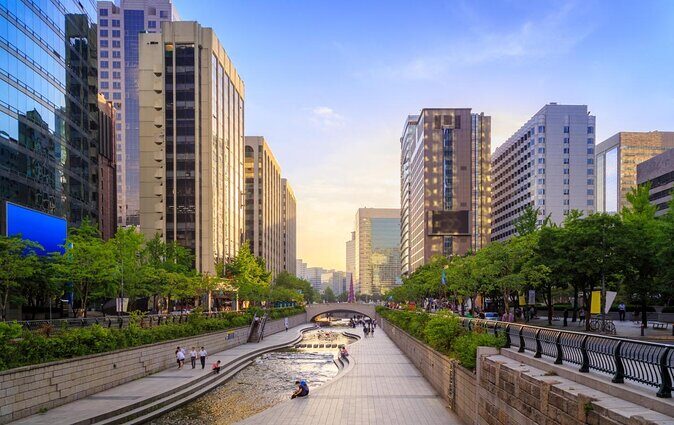
- Balanced immersion in Seoul’s historic landmarks and modern city life
- Knowledgeable guide providing personalized insights and background stories
- Affordable value at $43 for a well-rounded, cultural experience
- Focus on authentic sites like Deoksugung and Gyeonghuigung rather than crowded tourist traps
- Comfortable pacing suitable for most travelers, with plenty of time for photos and questions
- Includes stops at cultural sites such as Jeongdong Theater and Jungmyeongjeon Hall
A Detailed Look at the Tour
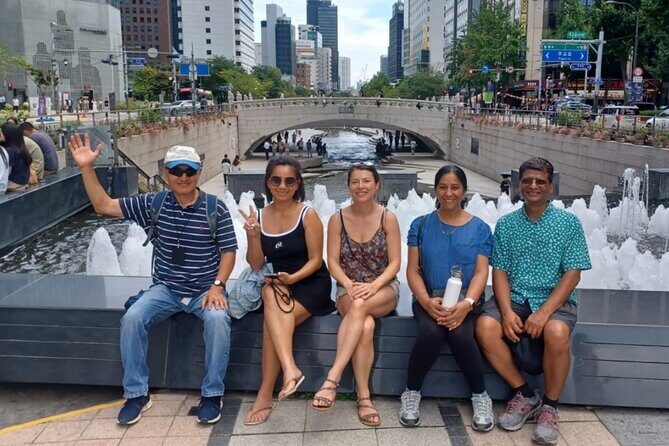
If you're drawn to exploring Seoul on foot, we've looked into these other walking experiences
Starting Point: Deoksugung Palace
We begin our journey at Deoksugung Palace, which is not only visually stunning but also historically layered. Built during the Joseon Dynasty, it was home to royalty and later became a symbol of Korea’s modernization efforts, especially with its Western-style buildings added during the Japanese occupation. The palace’s gardens—featuring a stone-wall road lined with pines and a serene lotus pond—offer quintessential photo opportunities.
The tour guide, whom many reviews praise, gives a lively commentary about the palace’s evolution. One traveler noted, “Sam was a wonderful tour guide. He provided a fun and informative tour,” which shows how a good guide can make history come alive. The free admission makes this a very accessible starting point, allowing you to focus on your personal exploration after the guided overview.
Gyeonghuigung Palace: A Second Glimpse into Royal Life
Next, we walk to Gyeonghuigung Palace, once a secondary royal residence built in 1623. This site has seen its share of destruction—from Japanese invasions to the Korean War—and its current form is a testament to restoration efforts. It served multiple roles: from a military headquarters during Japanese rule to a site of historical significance today.
The guide sheds light on its past uses, and the free admission allows visitors to linger and absorb the atmosphere. One review enthusiastically called Gyeonghuigung a highlight, emphasizing how the site offers a different perspective than the often-mobbed Gyeongbokgung. It’s quieter, more reflective, and filled with authentic ruins and reconstructed buildings that tell stories of resilience.
Appenzeller Noble Memorial Museum: A Glimpse into Korea’s Educational and Religious Ties
This brief stop takes us to the former home of Baekjae Hakdang, a missionary school established by Methodist founder Henry Apenzeller. It’s a small but meaningful site that connects Korea’s educational development with its religious history. The museum also highlights notable alumni, making it a subtle but important chapter of Korea’s modern history.
Jeongdong Theater: Cultural Break and Refreshment
Later, we pause at Jeongdong Theater, which offers a chance to relax with some coffee or tea while soaking in the ambiance. The theater is known for traditional Korean performances, including concerts, plays, and musicals, often blending historic themes with contemporary artistry. This stop is a favorite for many, giving travelers a taste of Korea’s vibrant performing arts scene.
Interested in history? Here are other past-focused experiences we've examined in Seoul
- Seoul: Deoksugung Palace Heritage Walking Tour
- From Seoul: Dae Jang Geum Park Historic K-Drama Set Tour
- Seoul: Aegibong DMZ & Hanok Scenic/Historical One Day Tour
- Seoul: Ganghwa Island UNESCO World Heritage Private Tour
- Street photoshoot and Seoul Hidden gem History Walking Tour
- Seoul: Korean War Historical Food Tour
Jungmyeongjeon Hall: A Site of Historic Significance
Built in 1899 as the imperial library of the Korean Empire, Jungmyeongjeon Hall played a crucial role during Korea’s last years of monarchy. It became the temporary residence of Emperor Gojong after a fire at Deoksugung. Notably, it’s the site where the Eulsa Treaty was signed in 1905, marking a pivotal moment in Korea’s history.
Today, the exhibition hall offers educational displays, helping visitors understand the political turmoil of the era. The tour guide’s storytelling here adds layers of understanding, making it more than just a building.
Gwanghwamun Square: The Heart of Modern Seoul
Our stroll culminates at Gwanghwamun Square, where the grand King Sejong statue and other sculptures create a lively backdrop. The square, built in 2009, is a hub for both locals and travelers, symbolizing Korea’s pride in its history and cultural identity. The fountain and open space encourage reflection and provide a fitting conclusion to a journey through Seoul’s layered past.
The Experience in Context
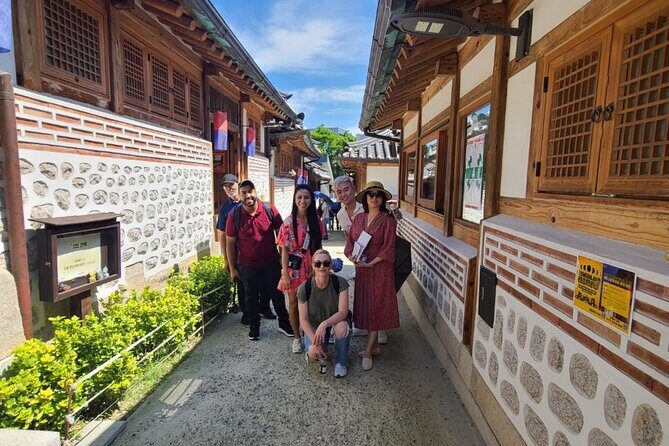
This tour is priced very reasonably, considering it includes a professional English-speaking guide and access to several key sites. The free admission to palaces and museums significantly enhances the value. It’s clear from reviews like “Sam provided a fun and informative tour,” that the guides are well-trained and truly engaged with their audience.
One of the tour’s notable strengths is how it balances historical depth with cultural relevance. You leave not just with dates and names but with stories that make the sites memorable. For example, the mention of the Eulsa Treaty helps you understand Korea’s struggles with sovereignty, making your walk more meaningful.
Practicalities and Considerations
The tour starts at Deoksugung Palace at 9:30 am, a perfect time to beat some of the crowds and enjoy the sites with plenty of daylight. The group remains small—max 15 people—ensuring personalized attention. The mobile ticket system makes check-in straightforward.
While the tour is quite comprehensive, it does not include lunch or personal expenses, so plan accordingly. The 3-hour duration makes it accessible even for travelers with tight schedules, but history enthusiasts may want to explore further afterward.
Who Should Consider This Tour?
This experience is ideal for those interested in Korea’s late 19th and early 20th-century history, especially if you enjoy guided walks with engaging storytellers. It suits travelers who prefer authentic sites rather than overly commercialized attractions. It’s also excellent for anyone wanting a balanced overview of Seoul’s royal past, religious influences, and modern development in a relatively short time.
If you want a well-organized, insightful introduction that balances history, culture, and some leisure, this tour hits the mark. It’s perfect for first-time visitors or those who want a lively, informative walk that doesn’t break the bank.
FAQ
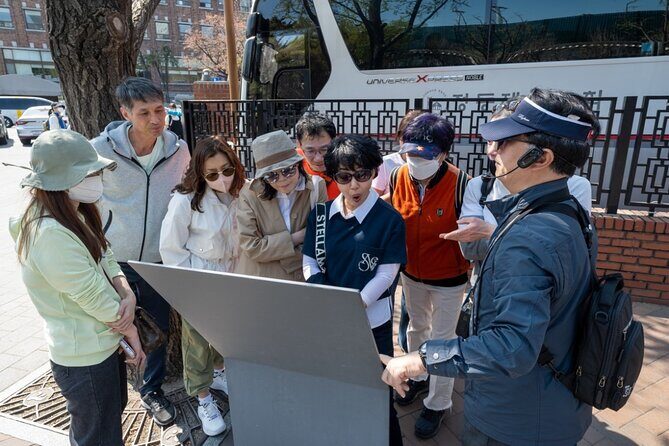
Is the tour suitable for all ages?
Yes, most travelers can participate, and the pace is comfortable for a wide range of ages.
How long does each site visit last?
Stops are generally around 10 to 25 minutes, allowing enough time for photos and questions but keeping the tour moving.
Are there opportunities to buy souvenirs or food?
The tour includes stops where you can relax and get drinks, but it doesn’t include food or shopping. You might find options nearby.
Is the tour walking-intensive?
Yes, it’s a walking tour, but the pace is manageable. Wear comfortable shoes and be prepared for some steps.
What is included in the price?
A professional English-speaking guide is included. Entrance fees for palaces and museums are free.
Can I cancel if my plans change?
Yes, you can cancel for free up to 24 hours before, and you’ll get a full refund.
Where does the tour start and end?
It begins at Deoksugung Palace and ends near Cheonggyecheon Stream, both accessible via public transit.
What should I bring?
Bring water, comfortable shoes, and a camera. Light snacks are fine, but the tour doesn’t include meals.
Is it suitable for photography?
Absolutely. Many sites are photogenic, especially Deoksugung’s gardens and Gwanghwamun Square.
Will the guide tell stories beyond the facts?
Yes, guides like Sam are praised for sharing engaging stories that bring the sites to life.
Final Thoughts
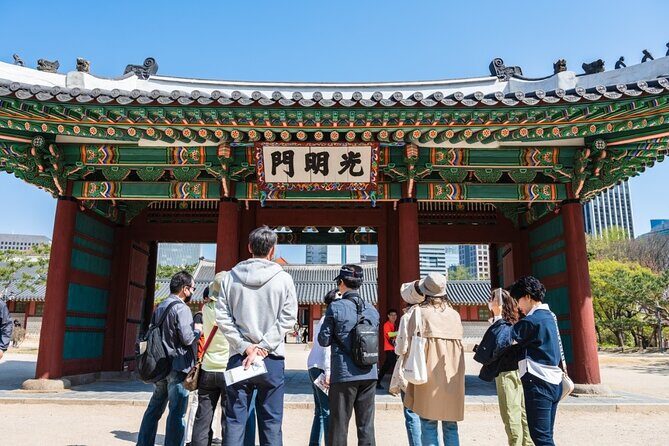
This Deoksugung + Jeongdong-gil tour offers a beautifully curated glimpse into Seoul’s royal, religious, and modern history—all in just a few hours. It’s a great way to lay a solid foundation of understanding, especially for first-time visitors eager to get their bearings and appreciate the layers of Korea’s capital city.
The combination of historic palaces, cultural stops, and informative commentary creates an experience that’s both engaging and educational. The small group size ensures you won’t feel lost in the crowd, and the modest price makes it accessible for many travelers.
If you’re curious about Seoul’s transitional years—when Korea faced modernization and foreign influence—this tour will give you plenty to think about and plenty of memorable sights to enjoy.
For those who want to explore history without sacrificing comfort or getting overwhelmed, this walk is a perfect choice. It’s especially suited for travelers who value authentic sites and local insights over commercialized attractions, and for anyone wanting a meaningful introduction to Korea’s vibrant capital.
More Historical Tours in Seoul
More Walking Tours in Seoul
- Best Walking Tour to Gyeongbok Palace n Bukchon with Expert
- Seoul Myeongdong Catholic Church Historic Private Walking Tour
- Seoul: Seongsu-dong K-Pop Culture Walking Tour
- Seoul History Walking Tour
- Buam dong Walking Tour Art, History and Parasite in Seoul
- Gangnam Walking Tour on Youth and Society in Seoul Korea
More Tour Reviews in Seoul
- Secret Cooking Class in Seoul by Secret Food Tours
- Noryangjin Fish Market Dinner
- Amazing DMZ TOUR with Exclusive North Korean Defector Meet-Up
- Seoul DMZ Tour with 3rd Tunnel and Red Suspension Bridge
- Seoul: Korea Dark History Tour at Seodaemun Prison
- Private Hiking tour to Bukhansan Peak(Baegundae: 836.5m) with Mountain Expert
More Seoul experiences we've covered
- Secret Cooking Class in Seoul by Secret Food Tours
- Noryangjin Fish Market Dinner
- Amazing DMZ TOUR with Exclusive North Korean Defector Meet-Up
- Seoul DMZ Tour with 3rd Tunnel and Red Suspension Bridge
- Seoul: Korea Dark History Tour at Seodaemun Prison
- Private Hiking tour to Bukhansan Peak(Baegundae: 836.5m) with Mountain Expert
- DIY Seoul Private Tour: Select 4 places you want to go
- Best Walking Tour to Gyeongbok Palace n Bukchon with Expert
- Traditional Seoul Gourmet Tour in Bukchon
- BTS Army Fan Day Tour from Seoul (Follow K-Pop Star Footsteps)
- Korea: Trip and Itinerary Planning – Travel Effortlessly!
- Small-Group Night Dining Tour: 10 Tastings With Authentic KBBQ
